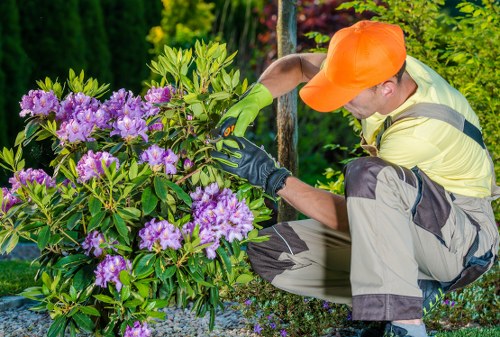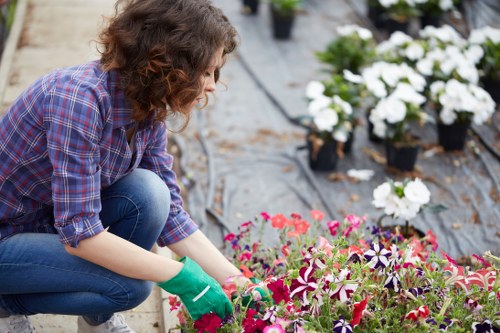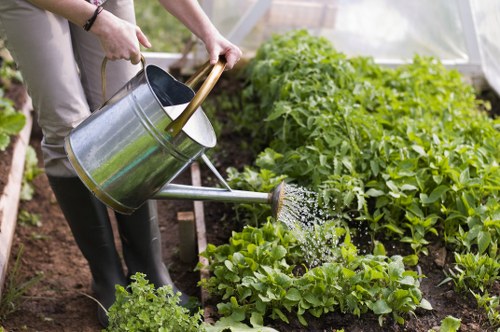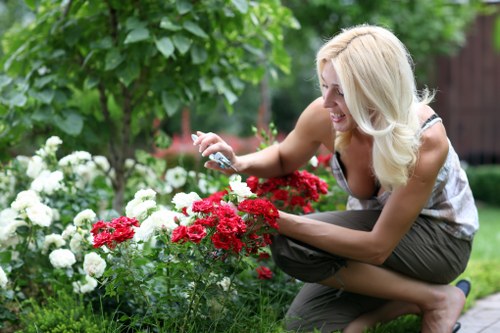Comprehensive Guide to Garden Fence Installation in Hither Green

Installing a garden fence in Hither Green not only enhances the aesthetic appeal of your property but also provides necessary privacy and security. Whether you’re looking to enclose a vegetable patch, create a safe space for children and pets, or simply add a decorative element to your garden, understanding the process and options available is crucial.
Hither Green offers a variety of garden styles, from traditional English gardens to modern minimalist spaces. The type of fence you choose should complement your garden’s existing design while fulfilling its intended purpose.
In this guide, we will walk you through the essential steps and considerations for successful garden fence installation in Hither Green. From selecting materials and designs to understanding local regulations and finding the right installer, we’ve got you covered.
Choosing the Right Fence Material

The first step in garden fence installation is selecting the appropriate material. The choice of material impacts the fence’s durability, maintenance, and overall look. Here are some popular options:
- Wood: Offers a classic and natural appearance. Suitable for various styles but requires regular maintenance to prevent weather damage.
- Vinyl: Low maintenance and available in multiple colors and styles. Resistant to rot and insects.
- Metal: Includes options like wrought iron, aluminum, and steel. Provides strength and security with a modern or traditional look.
- Composite: Made from a mix of wood fibers and plastic. Durable and eco-friendly with minimal maintenance.
Consider factors such as climate, budget, and the specific needs of your garden when choosing the material.
Additionally, think about blending the fence with your garden’s aesthetic. For instance, a wooden picket fence may suit a cottage garden, while a sleek metal fence might complement a contemporary landscape.
Design and Style Options

Once you’ve selected the material, the next step is deciding on the design and style of your fence. Here are some popular styles to consider:
- Picket Fences: Ideal for a charming and traditional look. Often used in residential gardens.
- Panel Fences: Provide solid privacy and are available in various heights and finishes.
- Split Rail Fences: Best for a rustic or country-style garden. Typically used for marking boundaries without complete enclosure.
- Vertical Slat Fences: Modern aesthetic with vertical lines, suitable for contemporary gardens.
- Green Walls: Combine fencing with living plants for an eco-friendly and visually appealing option.
Consider the purpose of your fence when choosing a style. For example, if privacy is a primary concern, a panel fence might be the best option, whereas a picket fence can add decorative appeal without completely blocking views.
Additionally, the height of the fence should be appropriate for its function and comply with local regulations. In Hither Green, typical garden fences range from 4 to 6 feet in height, but always check with local authorities for specific requirements.
Understanding Local Regulations

Before installing a garden fence in Hither Green, it’s important to familiarize yourself with local building codes and regulations. These rules can dictate various aspects of your fence, including height, material, and placement.
- Height Restrictions: Most areas in Hither Green have specific height limits for garden fences. Typically, back garden fences can be taller than those facing the street.
- Boundary Laws: Ensure that your fence is placed correctly on your property line to avoid disputes with neighbors.
- Material Restrictions: Some neighborhoods may have guidelines on acceptable fence materials to maintain a consistent aesthetic.
- Permits: For certain types of fences or heights, a building permit may be required.
Violating local regulations can result in fines or the need to remove or alter your fence. It’s advisable to consult with the Hither Green Borough Council or a local fence installer who is familiar with the area’s rules.
Additionally, discussing your plans with neighbors can help prevent potential disputes and ensure that your fence installation proceeds smoothly.
Planning the Installation Process

Proper planning is essential for a successful garden fence installation. Here are the key steps to follow:
- Measure Your Space: Accurately measure the length of the area where the fence will be installed. This ensures you purchase the correct amount of materials.
- Choose the Fence Type: Based on your needs and preferences, select the appropriate fence material and style.
- Gather Tools and Materials: Ensure you have all necessary tools and materials, such as posts, rails, panels, concrete, and hardware.
- Mark the Layout: Use stakes and string to outline where the fence will be placed. This helps in maintaining straight lines and proper alignment.
- Install Fence Posts: Dig holes for the posts, typically 1/3 of the post’s length should be buried in the ground. Use concrete to secure the posts firmly.
- Attach Panels or Rails: Once the posts are secure, attach the fence panels or rails according to your chosen design.
- Finishing Touches: Apply any finishes, such as paint or stain, and ensure all components are securely fastened.
Consider hiring a professional installer if you’re unsure about any step of the process. Professional installers can ensure that your fence is built to last and complies with all local regulations.
Additionally, factor in weather conditions when planning your installation. Avoid installing during rainy or extremely cold periods to ensure concrete sets properly and materials are not damaged.
Maintenance Tips for Your Garden Fence
Proper maintenance can extend the life of your garden fence and keep it looking its best. Here are some essential maintenance tips:
- Regular Cleaning: Remove dirt, debris, and mildew from your fence using a hose and mild detergent. For wooden fences, occasional power washing can be beneficial.
- Inspect for Damage: Periodically check for loose or broken posts, rails, or panels. Address any issues promptly to prevent further damage.
- Repaint or Stain: Wooden fences may require repainting or staining every few years to protect against weathering and pests.
- Prevent Rust: For metal fences, apply rust-resistant paint and inspect for signs of corrosion. Treat any rust spots immediately.
- Vegetation Control: Keep plants and vines from overgrowing your fence, as they can cause structural damage over time.
Regular maintenance not only preserves the appearance of your fence but also ensures its functionality and durability. Addressing minor issues early can save you from costly repairs or replacements in the future.
Additionally, maintaining a clean and well-kept fence contributes to the overall appeal of your garden, making it a pleasant space for you and your family.
Hiring the Right Fence Installer
Choosing a reliable and experienced fence installer is crucial for a successful garden fence installation. Here are some tips to help you select the right professional in Hither Green:
- Experience: Look for installers who have extensive experience with the type of fence you want to install.
- Reputation: Check reviews and ask for references to gauge the installer’s reputation and quality of work.
- Licensing and Insurance: Ensure the installer is properly licensed and insured to protect against any accidents or damages during installation.
- Quotes and Estimates: Obtain multiple quotes to compare pricing and services offered. Be wary of unusually low bids, as they may indicate subpar materials or workmanship.
- Portfolio: Review the installer’s portfolio to assess the quality and style of their previous projects.
Additionally, a good installer should provide a clear contract outlining the project scope, timeline, and payment terms. Clear communication is essential to ensure that your expectations are met and that the installation proceeds smoothly.
Don’t hesitate to ask questions and express any concerns you may have. A reputable installer will be willing to address your queries and provide detailed information about the installation process.
Cost Considerations for Garden Fence Installation
Understanding the costs associated with garden fence installation can help you budget effectively and avoid unexpected expenses. Several factors influence the overall cost, including:
- Material: The type of material you choose significantly impacts the cost. Wood is generally more affordable, while metal and composite materials can be pricier.
- Fence Height and Length: Taller and longer fences require more materials, increasing the overall cost.
- Design Complexity: Intricate designs or custom features may involve additional labor and materials.
- Installation Labor: Hiring a professional installer adds to the cost but ensures quality workmanship.
- Permits and Fees: Local regulations may require permits, which come with associated costs.
- Maintenance: Consider the long-term maintenance costs when selecting materials.
On average, garden fence installation in Hither Green can range from £500 to £3,000 or more, depending on the factors mentioned above. It’s advisable to obtain detailed quotes from multiple installers to compare prices and services.
Additionally, consider any discounts or promotions that installers may offer. Planning and budgeting ahead can help you manage costs effectively while achieving the desired outcome for your garden fence.
Enhancing Your Garden with a Fence
A well-installed garden fence can transform your outdoor space, providing both functionality and beauty. Here are some ways to enhance your garden with a fence:
- Privacy: Create a secluded oasis by installing a high fence that blocks out noise and prying eyes.
- Security: Deter intruders and protect your property by choosing a sturdy fence material like metal or steel.
- Defined Spaces: Use fencing to delineate different areas of your garden, such as pathways, seating areas, or planting zones.
- Aesthetic Appeal: Select a fence style and color that complements your garden’s design, adding visual interest and charm.
- Support for Plants: Install a trellis or vertical slat fence to support climbing plants and add greenery to your garden.
Additionally, incorporating lighting into your fence installation can create a warm and inviting atmosphere in the evenings. String lights or solar-powered fixtures can highlight the fence’s design and provide practical illumination for your garden paths.
By thoughtfully selecting the right fence and integrating it into your garden design, you can create a harmonious and functional outdoor space that suits your lifestyle and preferences.
Local Experts and Resources in Hither Green
Hither Green boasts a number of local experts and resources to assist with your garden fence installation. Leveraging local knowledge ensures that you receive advice and services tailored to the specific conditions and regulations of the area.
- Local Suppliers: Access materials from nearby suppliers who understand the local climate and preferences.
- Professional Installers: Hire installers with experience in Hither Green to ensure compliance with local regulations and high-quality workmanship.
- Garden Centers: Visit local garden centers for additional landscaping ideas and complementary products.
- Municipal Resources: Utilize resources provided by the Hither Green Borough Council for guidelines and permit applications.
- Community Groups: Engage with local community groups or online forums for recommendations and support.
By tapping into these resources, you can streamline your garden fence installation process and achieve a result that enhances your property’s value and beauty.
Additionally, attending local home improvement workshops or seminars can provide valuable insights and tips for maintaining your garden fence and overall garden health.
Sustainability and Eco-Friendly Options
As environmental awareness grows, many homeowners in Hither Green seek sustainable and eco-friendly fencing options. Here are some ways to incorporate sustainability into your garden fence installation:
- Recycled Materials: Choose fences made from recycled wood, metal, or plastic to reduce environmental impact.
- Sustainable Wood: Opt for wood sourced from sustainably managed forests to promote responsible forestry practices.
- Green Fencing: Incorporate living walls or vertical gardens into your fence design to enhance greenery and support local biodiversity.
- Low-VOC Finishes: Use paints and stains with low volatile organic compounds to minimize air pollution and improve health safety.
- Durable Materials: Select materials that have a longer lifespan to reduce the need for frequent replacements and minimize waste.
Implementing these eco-friendly practices not only benefits the environment but also contributes to a healthier and more vibrant garden ecosystem. Additionally, sustainable fencing options can increase the appeal and value of your property.
Furthermore, integrating natural elements such as plants and trees with your fence can create a harmonious balance between built structures and the natural environment, enhancing the overall beauty of your garden.
DIY vs. Professional Installation
Deciding between a DIY garden fence installation and hiring a professional can depend on several factors, including your skill level, budget, and the complexity of the project.
- DIY Installation: Suitable for those with basic handyman skills and smaller projects. It can be cost-effective but may require more time and effort. Proper planning and the right tools are essential for a successful DIY installation.
- Professional Installation: Recommended for larger or more complex projects. Professionals bring expertise, efficiency, and ensure compliance with local regulations. While more expensive, professional installation can save time and prevent potential mistakes.
Consider the scope of your garden fence project when making this decision. For intricate designs or challenging terrains, professional installers can provide valuable insights and solutions.
Additionally, hiring a professional can offer peace of mind, knowing that your fence is installed correctly and to a high standard of quality.
Personalizing Your Garden Fence
Your garden fence can be a reflection of your personal style and creativity. Here are some ideas to personalize your fence:
- Decorative Finials: Add decorative finials or post caps to enhance the fence’s appearance.
- Panels with Artwork: Incorporate artwork or decorative panels to make a unique statement.
- Climbing Plants: Use climbing plants like ivy, roses, or jasmine to add natural beauty and fragrance.
- Lighting: Integrate fairy lights or lanterns for a magical evening ambiance.
- Color Accents: Paint your fence in colors that complement your garden’s palette or architectural style.
Personalizing your fence not only makes it stand out but also creates a space that feels uniquely yours. These touches can enhance the overall enjoyment of your garden and add character to your outdoor area.
Additionally, seasonal decorations or temporary art pieces can allow you to change the look of your fence throughout the year, keeping your garden fresh and inviting.
Local Climate Considerations
Hither Green’s climate can influence the choice of materials and maintenance practices for your garden fence. Here are some factors to consider:
- Rainfall: High rainfall areas require materials that are resistant to moisture, such as treated wood, vinyl, or metal.
- Humidity: Humid conditions can promote mold and mildew growth, so using breathable materials and proper finishes is important.
- Wind: Sturdy materials like metal or concrete can better withstand strong winds compared to lightweight materials.
- Temperature Fluctuations: Materials that expand and contract with temperature changes, like vinyl or metal, can prevent warping and cracking.
- Sun Exposure: UV-resistant materials and finishes can prevent fading and degradation from prolonged sun exposure.
Choosing materials and designs suited to Hither Green’s climate ensures that your garden fence remains durable and attractive over time. Additionally, proper installation techniques can enhance the fence’s resilience against local weather conditions.
Consulting with local installers can provide valuable insights into the best materials and practices for your specific location and garden conditions.
Conclusion
Installing a garden fence in Hither Green is a rewarding project that can significantly enhance your property’s beauty, security, and functionality. By carefully selecting the right materials and design, understanding local regulations, and planning the installation process, you can achieve a fence that meets your needs and complements your garden.
Whether you choose to undertake the project yourself or hire a professional, attention to detail and regular maintenance will ensure that your garden fence remains a valuable and attractive feature for years to come.
Frequently Asked Questions
What types of garden fences are best for privacy in Hither Green?
For maximum privacy, panel fences made of wood or vinyl are ideal. These materials provide solid barriers that block views and sound effectively. Additionally, increasing the height of your fence or adding lattice panels can enhance privacy.
Do I need a permit to install a garden fence in Hither Green?
Depending on the fence's height and location, a permit may be required. It’s best to consult the Hither Green Borough Council or a local fencing professional to determine if a permit is necessary for your specific project.
How long does it take to install a garden fence?
The installation time varies based on the fence type, length, and complexity. On average, a professional installation can take anywhere from a few days to a week. DIY installations may take longer, especially for larger projects.
What maintenance does a wooden garden fence require?
Wooden fences need regular maintenance, including cleaning, sealing, painting or staining, and inspecting for damage. Applying a protective finish every few years can help prevent weathering and extend the fence’s lifespan.
Can I install a garden fence myself, or should I hire a professional?
If you have basic DIY skills and the project is relatively simple, you can install the fence yourself. However, for larger or more complex installations, it’s advisable to hire a professional to ensure quality and compliance with local regulations.